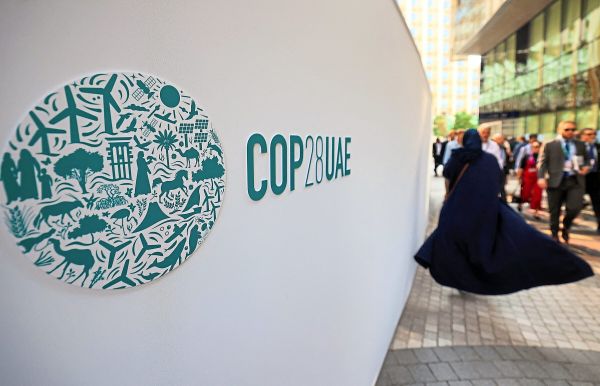
BIX ARTICLE
What banks mean when they put trillions into ESG
Dec 07, 2023
|
7 min read
Featured Posts
Social Bonds Illustrative Use-Of-Proceeds Case Studies Coronavirus
Jul 06, 2020
|
2 min read
Sustainable Banking Network (SBN) Creating Green Bond Markets
Jul 06, 2020
|
2 min read
Why is Inflation Making a Big Comeback After Being Absent for Decades in the U.S.?
Mar 24, 2022
|
7 min read
SC issues Corporate Governance Strategic Priorities 2021-2023
Mar 29, 2022
|
3 min read
Dubai: In recent years, many of the world’s biggest banks have published reports chronicling the vast sums they say they’re channelling into environmental and social activities. Now, senior people inside the industry are raising questions about those statements.
Banks including Morgan Stanley, HSBC Holdings Plc, Goldman Sachs Group Inc and JPMorgan Chase & Co have announced individual sustainable finance targets for 2030 that range from US$750bil to US$2.5 trillion.
Yet such statements leave investors with little real insight into the very different ways in which banks are defining what’s sustainable, according to senior bankers familiar with how the figures were compiled but who asked not to be identified discussing private deliberations.
The differences in accounting range from how banks treat mergers and acquisitions and debt underwriting to how they calculate revenue from market making, private equity investing, money-market funds, private banking, mortgages and revolving credit facilities, the people said.
Fears of greenwashing
Emily Farrimond, a partner at London-based consultancy Baringa Partners LLP, said the absence of a consistent methodology “can impact the credibility of the entire market, raising fears of greenwashing.”
And Greg Brown, a partner in the banking practice of law firm Allen & Overy, pointed to the lack of “a law or regulation” to steer the industry.
As a result, deciding what to call “sustainable” in bank reports is “kind of up for grabs”, Brown said.
It’s currently “impossible to compare ‘like for like’ between banks,” said Rachel Richardson, head of environmental, social and governance (ESG) at law firm Macfarlanes. “Until a standard market methodology or framework emerges, this is unlikely to change.”
Banks’ contribution to the energy transition will be the subject of keen debate in Dubai next Monday, as discussions at the UN climate talks turn to the vast sums needed to decarbonise industry and protect exposed communities.
According to provisional figures, COP28 will host significantly more bankers and investment managers than any previous Conference of the Parties.
Banks first started publishing sustainable-finance goals a few years after the 2015 Paris climate agreement. By 2021, the role of finance in creating a greener, fairer planet was a growing part of the public debate, leading an ever greater number of lenders to produce such targets.
But in the absence of regulations, banks have been free to set their own parameters for defining what counts as a sustainable or climate-transition investment.
Among the most contentious claims are those within the field of mergers and acquisitions (M&As), according to one European senior banker close to the matter who asked not to be named discussing sensitive information.
Some of the biggest banks in Britain, including Barclays Plc and HSBC, don’t include M&A in their sustainable finance targets even if a deal has elements of ESG, representatives for the banks told Bloomberg.
On the other side of the Atlantic, it’s a different story. Goldman, JPMorgan, Morgan Stanley, Citigroup Inc and Bank of America Corp count M&A deals in their sustainable finance targets.
However, some of the banks include whole-deal values instead of just their pro-rata share or the fees earned, according to people familiar with the matter.
“All firms – including banks – can use discretion when determining sustainable-finance targets,” said Richard Monks, a former policymaker at Britain’s Financial Conduct Authority (FCA) who is now a partner at EY.
“All, however, will need to evidence and justify their approach to the regulator with regards to which transactions they’ve counted in their targets.”
Allocation of capital
Spokespeople for the FCA and the US Securities and Exchange Commission declined to comment.
M&As shouldn’t be included in sustainable-finance targets because the sheer size of such transactions often means their “inclusion can skew achievement of targets in a way that other advisory services wouldn’t”, said Farrimond, who advises banks and asset managers on ESG strategies.
ShareAction, a British-based non-profit known for pushing climate-change resolutions at banks including HSBC and Barclays, is increasingly calling out lenders that list activities such as M&A, arguing that these don’t “result in the allocation or facilitation of capital”.
While services such as foreign-exchange hedging or M&A advisory can play a role in the low-carbon transition, they shouldn’t be included in sustainable-finance targets because they don’t “cover actual financing”, said Xavier Lerin, senior research manager at ShareAction.
A representative for Morgan Stanley, which in August said it was 70% of the way toward reaching the US$1 trillion in sustainable financing it’s told investors it would achieve by 2030, declined to comment beyond referring to the bank’s latest ESG report.
A spokesperson for Goldman Sachs, which in April said it was more than halfway toward reaching its US$750bil sustainable-finance goal, said banks “differ in their targets, business size and mix”.
Goldman, which ranks as the world’s leading M&A adviser, has an approach that reflects its “expertise and capabilities”, and that is “rigorous and thoughtful”, the spokesperson said.
Representatives for Citigroup, BofA and Barclays declined to comment.
An HSBC spokesperson said that in the absence of regulations, the bank is trying to apply what it views as “market standards”.
The British lender, which has compiled its own sustainable-finance and investment-data dictionary, has said it’s made “good progress” toward reaching a 2030 sustainable finance goal of between US$750bil and US$1 trillion.
JPMorgan, which recently published an update on its 2030 sustainable-finance target of US$2.5 trillion, only includes deals on which it acted as an adviser if there’s a clear sustainability justification for doing so, according to Ramaswamy Variankaval, global head of corporate advisory and sustainable solutions at the bank.
Sustainable finance
Then there’s the issue of how banks account for their capital-market activities.
Anderson Lee is a researcher at the World Resources Institute (WRI), which has been examining sustainable-finance statements since 2019.
He said WRI’s work shows that most banks call debt underwriting “sustainable finance” when they arrange deals that are judged to have an ESG component, but they don’t account for the emissions of deals arranged for fossil-fuel clients.
It’s “cherry picking”, he said.
Another area in which there’s significant divergence among banks is the extent to which they book ESG debt products.
Sustainability-linked loans (SLL), a US$1.5 trillion unregulated market, aren’t included in the sustainable-finance targets of JPMorgan, according to Variankaval.
There is “a variety of judgment questions that people can ask about how ambitious or how aggressive” the so-called key performance indicators on sustainability-linked loans are, he said. JPMorgan is the world’s largest arranger of SLL deals after BofA, according to data compiled by Bloomberg.
ING Groep NV, which pioneered the SLL market back in 2017, includes all sustainability-linked loans it helps arrange, according to information available on its website.
“Our approach is, either it deserves the sustainability-linked label or it doesn’t,” said Jacomijn Vels, ING’s global head of sustainable finance. “And only if it fits our standard for the label will it be included in volume mobilised.”
Other big banks only include some SLL transactions, according to representatives from the firms who asked not to be identified discussing non-public information.
Banks also differ in how they account for investments, with some counting new inflows and others tallying assets under management.
They also diverge on derivatives. Such products can come in the form of currency hedges related to deals that claim to have an element of sustainability, or as sustainability-linked derivatives (SLDs), ESG credit-default swaps, exchange-traded derivatives on listed ESG-linked equity indexes, as well as emissions-trading derivatives, according to the International Swaps and Derivatives Association. — Bloomberg
Disclaimer
The information provided in this report is of a general nature and has been prepared for information purposes only. It is not intended to constitute research or as advice for any investor. The information in this report is not and should not be construed or considered as an offer, recommendation or solicitation for investments. Investors are advised to make their own independent evaluation of the information contained in this report, consider their own individual investment objectives, financial situation and particular needs and should seek appropriate personalised financial advice from a qualified professional to suit individual circumstances and risk profile.
The information contained in this report is prepared from data believed to be correct and reliable at the time of issuance of this report. While every effort is made to ensure the information is up-to-date and correct, Bond and Sukuk Information Platform Sdn Bhd (“the Company”) does not make any guarantee, representation or warranty, express or implied, as to the adequacy, accuracy, completeness, reliability or fairness of any such information contained in this report and accordingly, neither the Company nor any of its affiliates nor its related persons shall not be liable in any manner whatsoever for any consequences (including but not limited to any direct, indirect or consequential losses, loss of profits and damages) of any reliance thereon or usage thereof.
YOU MAY ALSO LIKE
ARTICLE
Jan 09, 2026
|
4 min read
ARTICLE
Jan 08, 2026
|
5 min read
ARTICLE
Jan 05, 2026
|
7 min read
ARTICLE
Dec 23, 2025
|
5 min read



